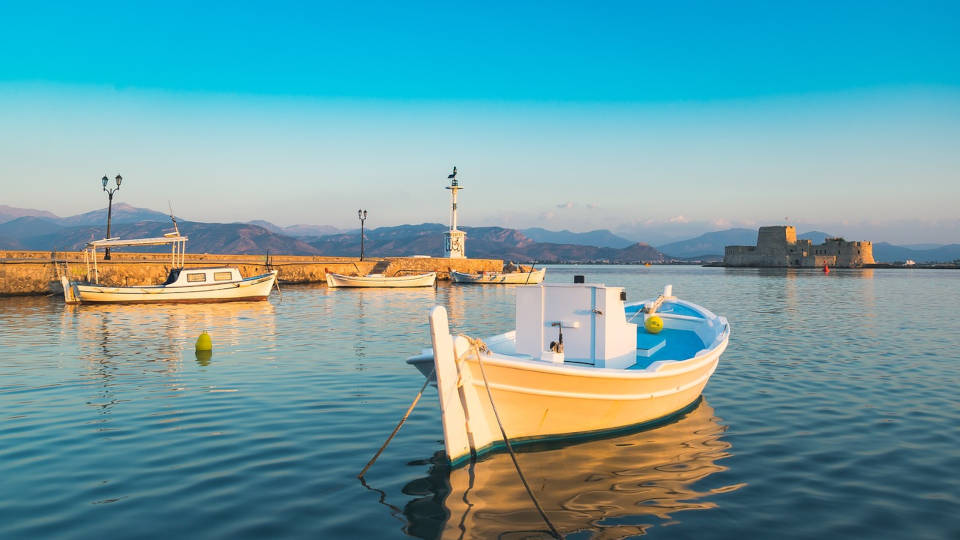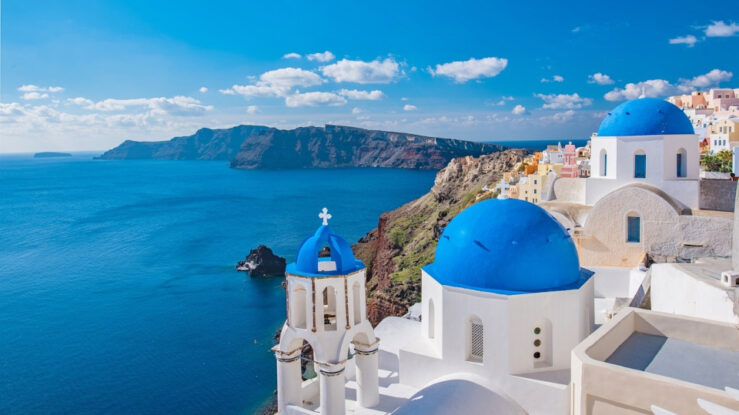Road Trip Peloponnese, Greece: Olympia, Mycenae, Nafplio, Epidaurus
1. Corinth
2. Mycenae
3. Nafplio
4. Epidaurus
5. Poros
6. Olympia
7. Delphi
Are you planning a week or 10 days in the Peloponnese and want to include some of the top classical sights and enjoy the beauty and charm of the peninsula? Then you may find inspiration in this itinerary Corinth ➤ Mycenae ➤ Nafplio ➤ Epidaurus ➤ Poros ➤ Olympia, covering many of the famous sites in the Peloponnese on a road trip in this part of Greece.
If you are flying into Athens in Greece, it is easy to rent a car and make a road trip around the Peloponnese. The Greek peninsula is close to Athens (Corinth is only slightly more than an hour’s drive from the Greek capital).
This road trip will take you around the northern Peloponnese, but you can easily extend it to the southern part if you have more time.
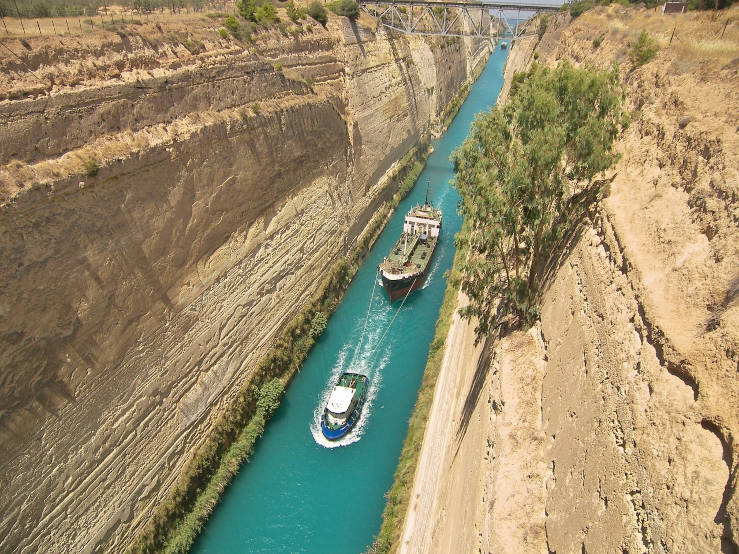
Photo: Manfred von Kannen / Pixabay
After renting a car and leaving Athens, you will head towards Corinth, the gateway to the Peloponnese in Greece. The actual gateway is the Corinth Canal, the artificial canal dug through the land to connect the two seas on either side. After many projects and failed attempts in ancient times, the imposing canal was finally completed in 1893, allowing ships to pass from the Gulf of Corinth to the Saronic Gulf. Over time, it has become a major tourist attraction in Greece! You will pass the bridge over the famed canal to arrive at Ancient Corinth and the Peloponnese.
In antiquity, Ancient Corinth was one of the most important city states in Greece. It had both political power and flourished with art and culture. Later in history, Julius Caesar turned the city into a Roman colony. The remains from that era include the ruins of the grand Temple of Apollo, a Roman theatre, Roman baths, and a remarkable triumphal arch.
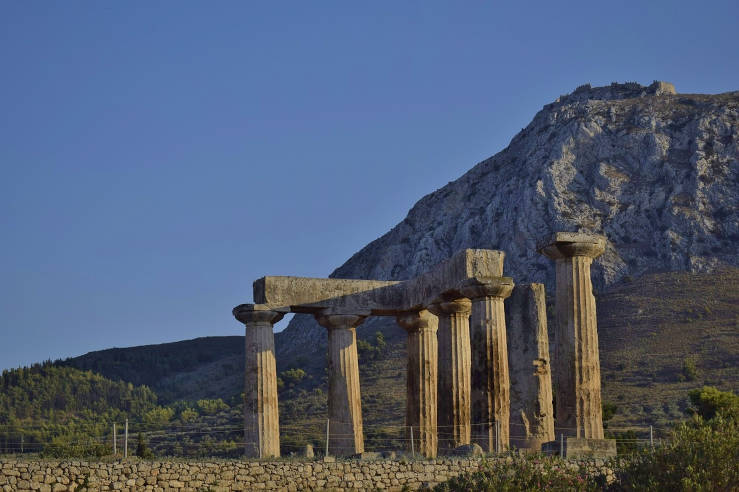
Ancient Corinth & Acrocorinth | Photo: Peter Kellfur / Pixabay
Atop the mountain, overlooking Corinth, you will spot Acrocorinth, Corinth’s upper city.
If you feel like a dip in the sea before driving on, there are several options at the local beaches nearby, for instance, at the modern city of Corinth! Read more about Ancient Corinth.
After Corinth, you will continue down to Mycenae, only a little more than 30 kilometres from Ancient Corinth.
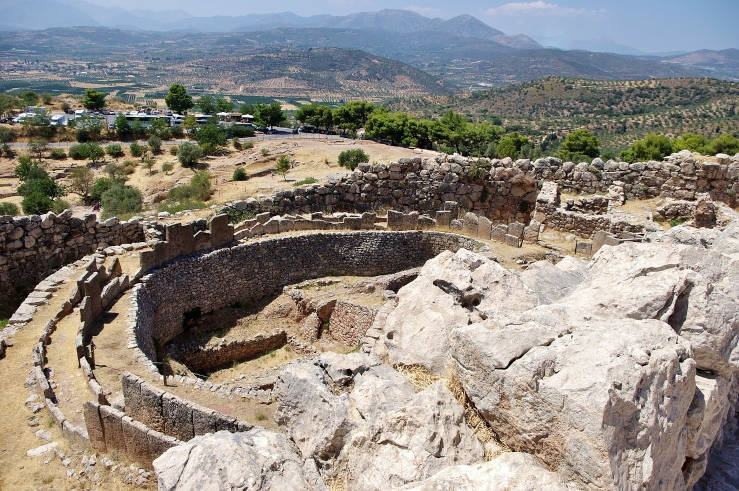
Photo: IJM2000 / Pixabay
Mycenae is one of the ancient top sights in the Peloponnese, as well as in Greece. In ancient times, Mycenae was one of the greatest centres of civilisation in Greece, with phenomenal architecture and unique cultural development. The site has given its name to the Mycenaean period 1600 – 1100 BC, and the Mycenaean civilisation was at its peak around 1350 BC (towards the end of the Bronze Age in Ancient Greece).
Today, the archaeological site tells the story of a time when Mycenae was a sophisticated society in Greece and a state of considerable military importance. In its heyday, the citadel and town counted a population of 30,000.
One of the most spectacular structures at Mycenae is the main entrance, the Lion Gate, with two lions depicted in a relief. It was erected around 1250 BC and has been named after the relief sculpture of the two lions standing above the entrance, guarding the royal grounds. The monument is unique since it is the only surviving piece of Mycenaean sculpture. Moreover, it is the only relief described in the literature of antiquity.
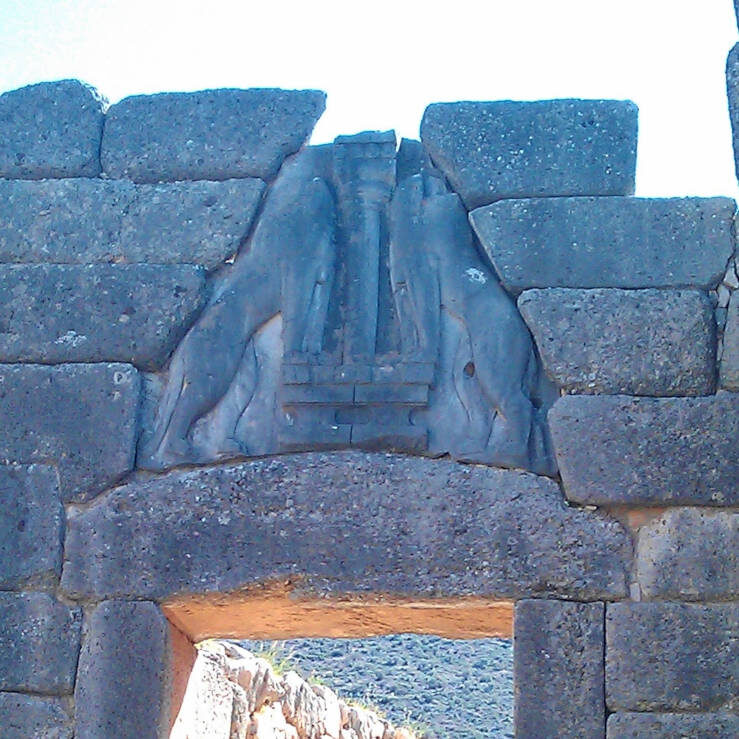
Photo: Travel In Culture
Another famous site at Mycenae is the Treasury of Atreus or Tomb of Agamemnon, the funerary chamber of the king of Mycenae. It is considered one of the finest examples of Mycenaean tholos tombs.
Mycenae has been a UNESCO World Heritage Site since 1999.
You will continue down to picturesque Nafplio (Nafplion), also founded in antiquity – and served as a seaport in Greece in the Middle Ages. Later, Nafplio was first under the Republic of Venice and then the Ottoman Empire. Finally, it was the capital of the First Hellenic Republic and the Kingdom of Greece 1827 – 1834. Nafplio still features the walls of the Acronauplia, the oldest part of the city, as well as fortifications, including the Palamidi and Bourtzi surrounded by water.
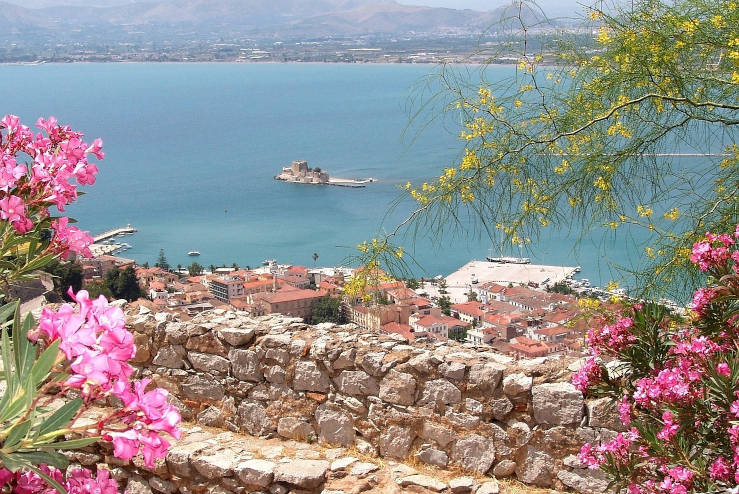
Photo: Angelika / Pixabay
Nafplio is a lovely place to stay for a few days, and the coastal city is also a good base for day trips in this part of Greece. It is a beautiful city that the Venetians left their mark on, with many colourful houses. Various architectural styles have been used, including eclectic, neoclassical and modernist.
When Nafplio was the capital of the Kingdom of the Morea, the Venetians built a fortress, the Castle of Palamidi, from where the city was defended. You can still view it atop the mountain overlooking the city.
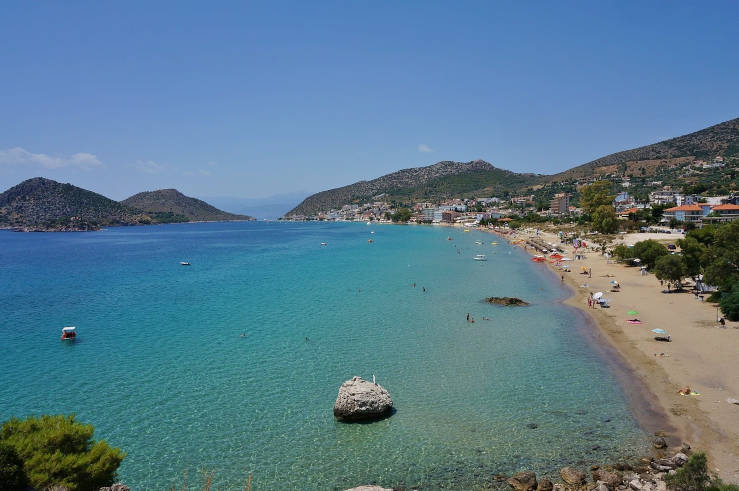
Tolo | Photo: Kuradomova / Pixabay
When you feel like going for a swim, the nearby Tolo Beach, just a few kilometres away, is a real gem!
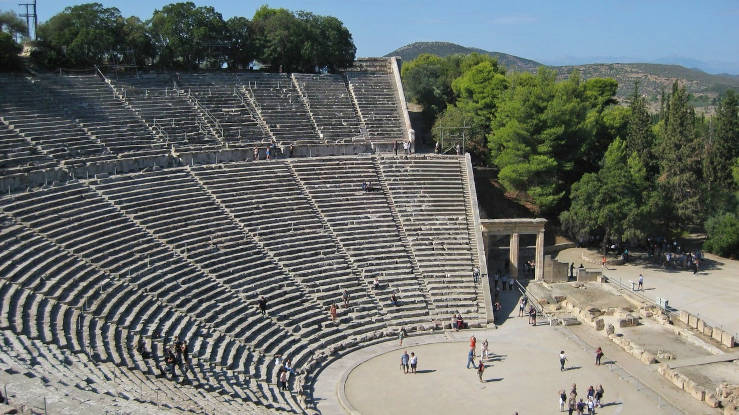
Photo: r0the / Pixabay
After leaving Nafplio, you will go to another ancient top destination in Greece: Epidaurus. Epidaurus is known for its spectacular classical open-air theatre, with strikingly ‘well-preserved’ acoustics. If you stand at the stage centre, whispering, the words can be heard clearly in the rows of seats at the top! Try it out for yourself! In summer, there are performances of Greek drama and tragedies, where up to 15,000 spectators can easily hear a pin drop.
The Epidaurus theatre was constructed in the late 4th century BC and is today one of the most significant ancient theatres in Greece.
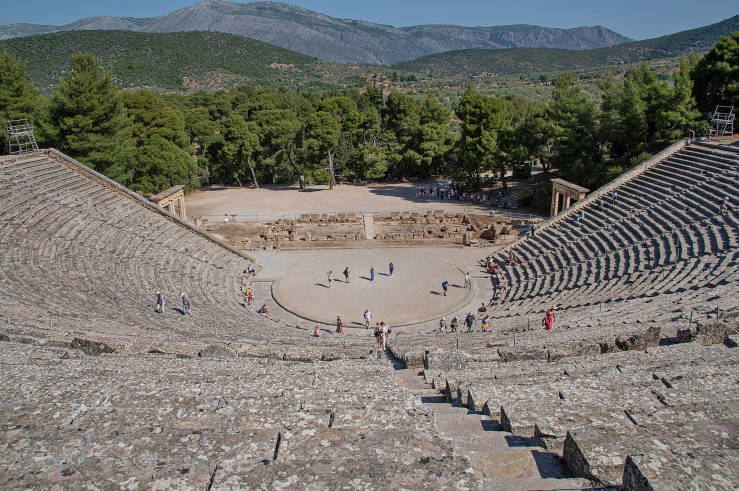
Photo: Jacqueline Macou / Pixabay
Epidaurus is also famous for other ancient constructions, including a stadium, gymnasiums, a hospital, baths, and the Sanctuary of Asclepius. Asclepius was the god of healing, and the site was dedicated to the god and the practice of medicine. In antiquity, people came here to receive medical cures. Through a ‘holistic’ approach, all activities at Epidaurus were meant to heal the mind, the body, and the soul. While receiving medical treatment, people could benefit from listening to music and watching plays at the theatre. Asclepius is depicted with a serpent-entwined rod, which has today become the symbol of medicine.
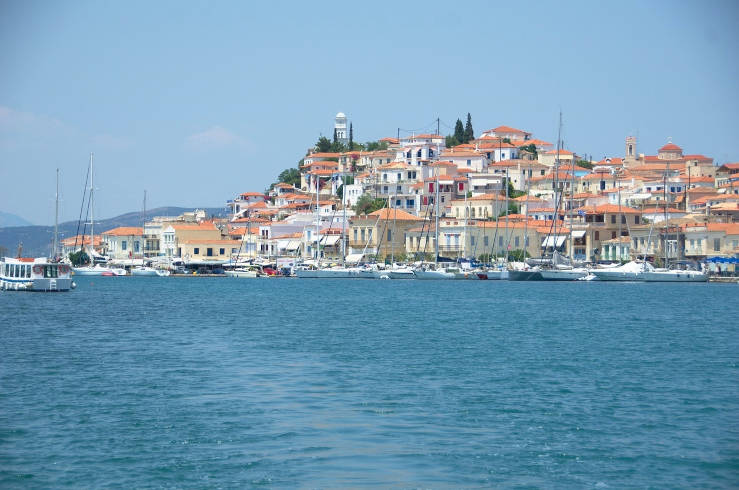
Photo: Dunnowku / Pixabay
You will now consider a stay on one of the small islands in the Saronic Gulf just off the Peloponnese coast. That could, for instance, be Poros, the picture-postcard island located just 5 minutes across the Poros Strait by ferry boat from Galatas.
Here, you will experience all the Greek idyll you can imagine. The seafront features elegant neoclassical buildings, and the white and pastel-coloured houses climbing up the hill are a real treat for the eyes. Poros are ‘two islands’, Sferia and Kalavria, connected by a bridge. Kalavria was originally dedicated to the god Apollo, but according to the legend, he later exchanged the island for the Oracle of Delphi in a trade with Poseidon!
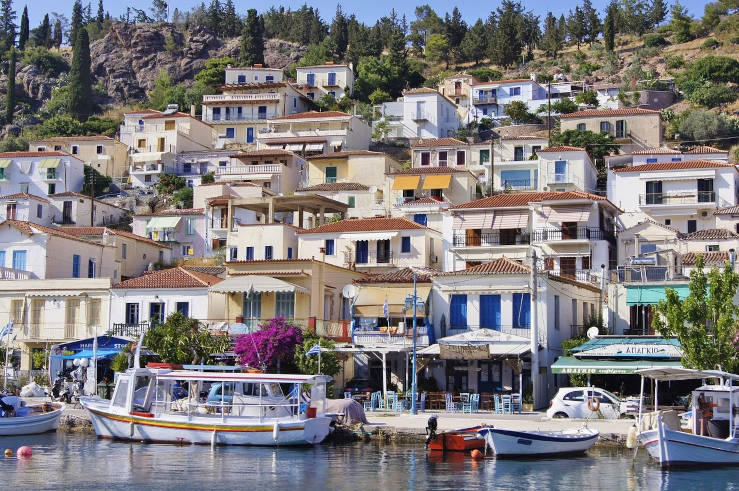
Photo: Nonomans / Pixabay
Kalavria features beautiful small beaches and an impressive monastery. You can swim, sail, or dive in the crystal clear waters – or hike through the pinewoods. It is the perfect place to relax for a day or two on your trip to the Peloponnese – and perhaps much appreciated among all the cultural sights.
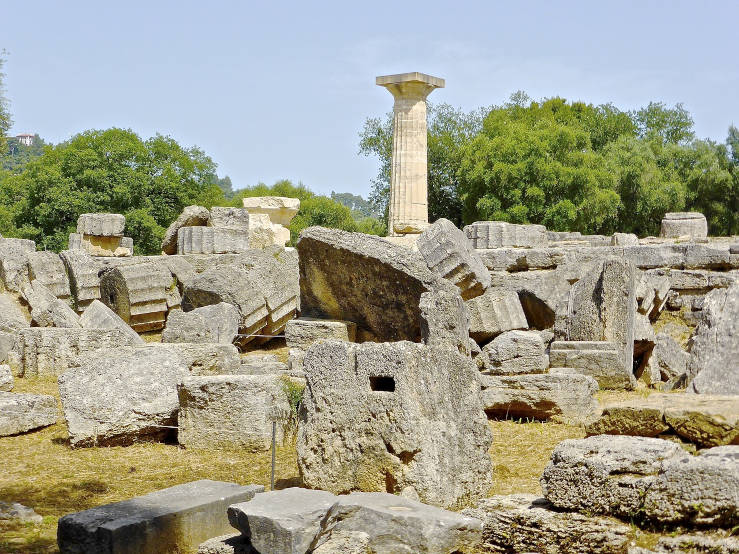
Photo: Siggy Nowak / Pixabay
After the first part of the trip on the eastern side of the Peloponnese, you will cross over the island – either by the winding, more direct road or by taking a detour on E65/E55.
The destination is the ancient Olympia, Archaia Olympia, since the 10th century BC considered a place of worship of the Greek god Zeus, the father of the twelve Olympian gods, and the birthplace of the Olympic Games. The Pan-Hellenic sanctuary was an important site of religion, politics, culture, and sport in ancient Greece – and it featured true masterpieces of works of sculpture and art. Here once stood a real treasure in Greece – an outstanding gold and ivory statue of Olympia Zeus, one of the Seven Wonders of the Ancient World. It has been lost – most likely destroyed around 430 BC.
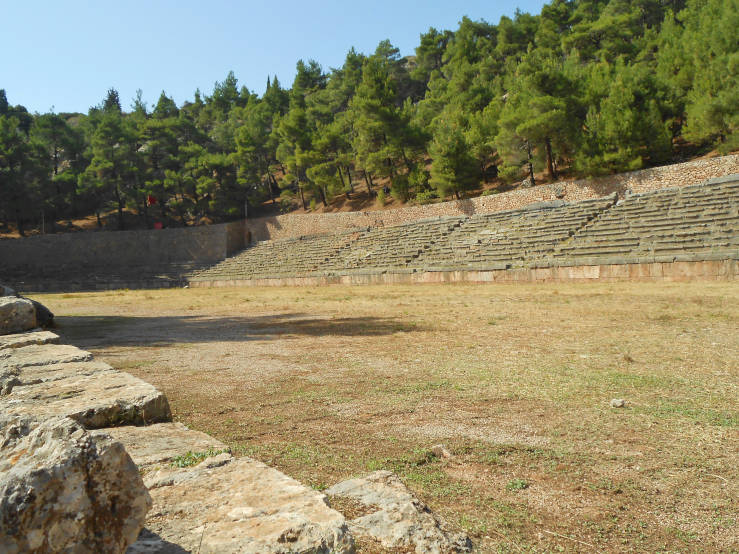
Photo: Travel In Culture
Archaia Olympia is today a significant archaeological site that, in Olympia’s heyday, held over 750 buildings. A significant number of these constructions still exist as ruins, and it is today a UNESCO World Heritage Site.
A remarkable ‘surviving’ space at Olympia is the stadium, with seating along the sloping sides. In addition to the stadium, the remains at Olympia include the ruins of the temples of Zeus and Hera, as well as countless other sanctuaries, residences belonging to important people, such as Nero’s House, thermal baths, a gymnasium, and a hippodrome. It is a large and impressive archaeological site. There is also an excellent museum right beside the site where artefacts found in the excavations are exhibited.
The surrounding landscape is gorgeous – and you may consider staying in the area for a couple of days to soak up all the impressions!
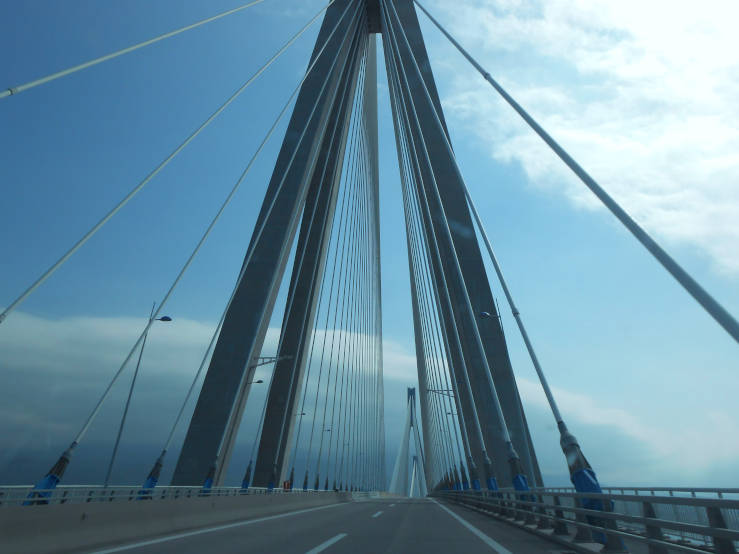
The Rio-Antirrio Bridge | Photo: Travel In Culture
You have now covered some of the significant cultural sights in the Peloponnese in Greece. On the way back to Athens, you may choose to cross the Gulf of Corinth at Patras, driving over one of the world’s longest cable-stayed bridges, the suspended Rio-Antirrio Bridge ( 2,252 metres), which will make it easy to include ancient Delfi on the other side of the Gulf as the last stop on your trip.
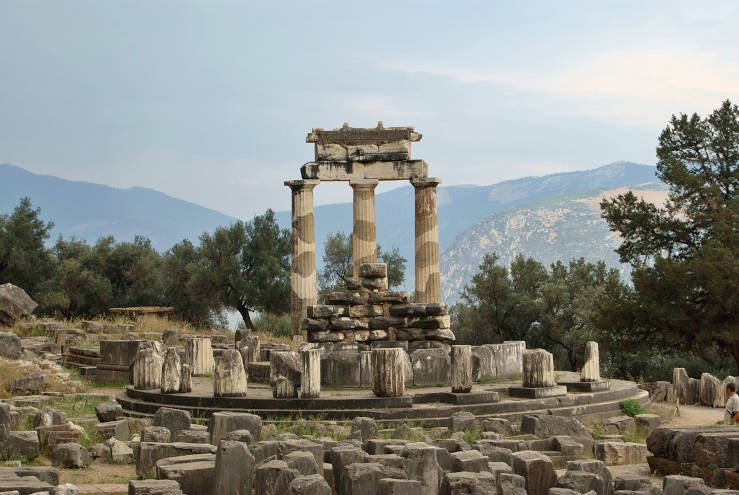
Photo: Debra Jean / Pixabay
The Sanctuary of Delphi is today known for its famous oracle, Pythia, who gave predictions on important matters in the classical world. Together with assisting priests, she communicated answers to questions asked by travellers. The state of ecstasy she was brought in, caused by the inhalation of gases from the underground, gave her the answers.
At the time, Delphi was a major cultural and religious centre, dedicated to the god Apollo and the goddess Athena. The sanctuary is set in an idyllic landscape on the sloping hills of Mount Parnassus. A visit to the archaeological site of Delphi is a must if you are in the area! Read more about Delphi.
Read next: What are the Best Things to Do in Athens and Site of Colossus of Rhodes today
Road Trip Peloponnese, Greece: Olympia, Mycenae, Nafplio, Epidaurus
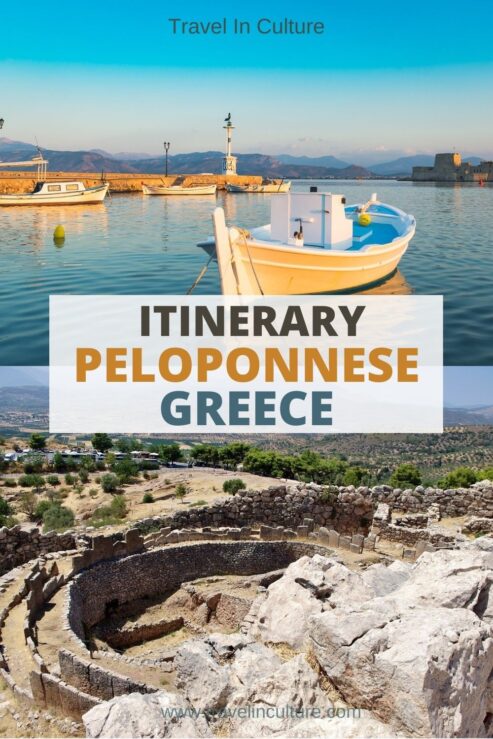
Featured image of
Road Trip Peloponnese, Greece: Olympia, Mycenae, Nafplio, Epidaurus:
Christian Hardi / Pixabay
Peloponnese Greece Corinth Olympia Mycenae Nafplio Epidaurus Poros


